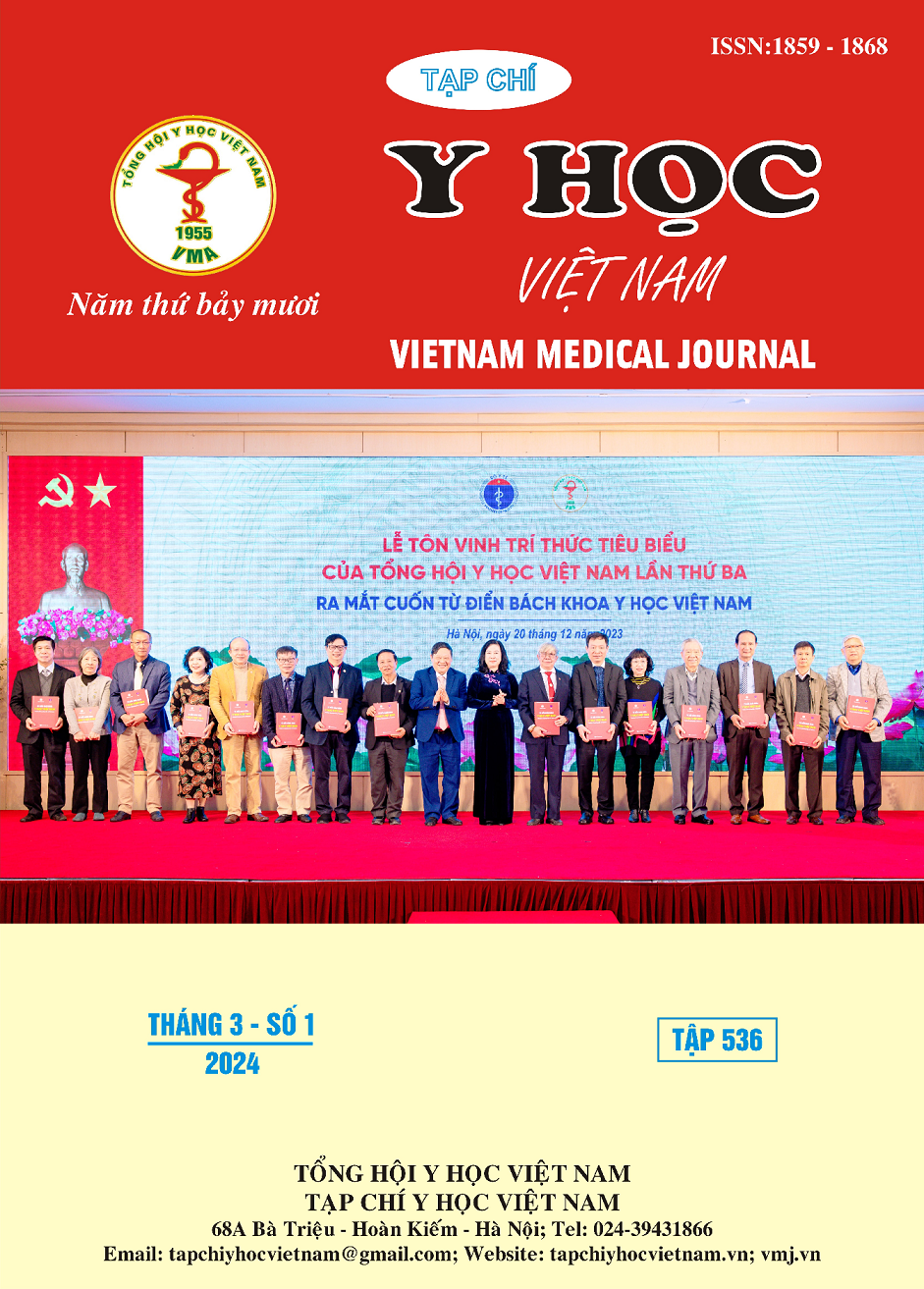EVALUATION INFLUENCE ON DOSE DISTRIBUTION OF USING THERMOPLASTIC MASK IMMOBILIZATION IN RADIOTHERAPY
Main Article Content
Abstract
Objective: To investigate the influence of a thermoplastic mask on patient setup errors and dose distribution during radiotherapy. Therefore, evaluate the effectiveness of using this thermoplastic mask. Materials: A total of 60 cancer patients scheduled for radiotherapy at Hospital K from October 2022 to August 2023 were evenly divided into two groups. Group 1 consisted of patients using the thermoplastic mask (TM group), while Group 2 consisted of patients not using fixation (NF group). Methods: Comparison of pre-treatment verification imaging results using CBCT between the two patient groups. Measurement of setup errors in left-right (X-axis), anterior-posterior (Y-axis), and superior-inferior (Z-axis) directions, followed by calculation of 3D vector errors, systematic setup errors (Σ), random setup errors (σ), and margin expansion CTV to PTV. Recalculate and compare the dose distribution according to the corresponding margin expansion CTV to PTV of each patient group. Results: The mean setup errors in the X-axis (-0.6mm), Y-axis (-2.11mm), Z-axis (0.62mm), and 3D vector error (2.27±0.86 mm) for the TM group were significantly lower (p<0.001) than the NF group (1.47mm, -3.52mm, 2.51mm, and 4.57±1.79 mm, respectively). Similarly, the largest systematic error Σ (4.01mm) and the largest random error σ (3.15mm) in the TM group were significantly lower (p<0.001) than the NF group (6.01mm and 6.09mm, respectively). Lastly, the margin expansion CTV to PTV in the TM group was smaller than that in the NF group according to all formulas, resulting in the OAR critical organ dose of the TM group being significantly smaller than the NF group. Conclusion: The use of a thermoplastic mask is a simple, cost-effective immobilization method that significantly reduces patient setup errors as well as unnecessary doses to OAR. Therefore, enhances accuracy in radiotherapy dose delivery, thereby improving treatment effectiveness.
Article Details
References
2. The Royal College of Radiologists, On target: ensuring geometric accuracy in radiotherapy.
3. L. Gilbeau, M. Octave-Prignot, T. Loncol, L. Renard, P. Scalliet, and V. G. Âgoire, “Comparison of setup accuracy of three different thermoplastic masks for the treatment of brain and head and neck tumors.” [Online]. Available: www.elsevier.com/locate/radonline.
4. M. Virkar, N. A. Kumar, P. Chadha, R. J. Rodrigues, and A. Kharde, “Vacuum and thermoplastic mould-based immobilization systems used in patient undergoing pelvic radiation therapy: a comparative study” International Journal of Clinical and Biomedical Research, pp. 8–10, Feb. 2020, doi: 10.31878/ijcbr.2019.61.03.
5. Y. Song, J. Peng, Q. Chen, and H. Luo, “Compare of interfractional setup reproducibility between vacuum-lock bag and thermoplastic mask in radiotherapy for breast cancer” Technol Cancer Res Treat, vol. 20, 2021, doi: 10.1177/ 15330338211043037.
6. E. M. Ambroa Rey, R. Gómez Pardos, D. Navarro Giménez, A. Ramirez Muñoz, and M. Colomer Truyols, “EP-1648: Thermoplastic mask dependency with interfractional uncertainties for head and neck VMAT treatments” Radiotherapy and Oncology, vol. 123, 2017, doi: 10.1016/s0167-8140(17)32083-2.
7. N. Massager, C. Renier, and D. Devriendt, “Acute skin allergy to thermoplastic mask used for patient immobilization during radiation therapy: A case report” J Med Case Rep, vol. 12, no. 1, 2018, doi: 10.1186/s13256-018-1715-y.


